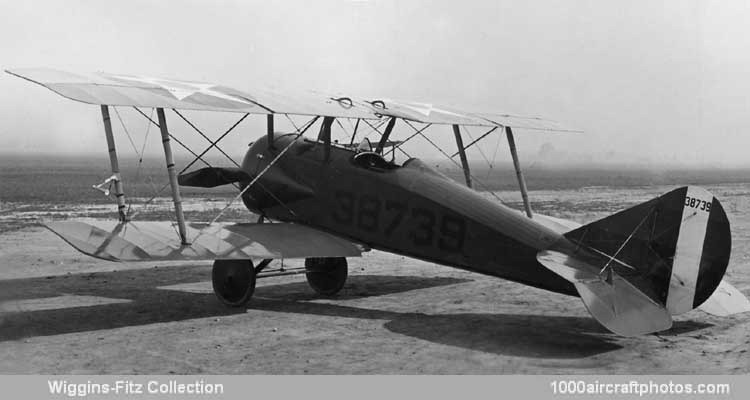07/31/2011. Remarks by Johan Visschedijk: "The Thomas S-4, designed by B. Douglas Thomas, was conceived late in 1916 as a Scout to be powered with the 100 hp French Gnome rotary engine then being manufactured in the US. The single prototype was evaluated by the Army but was rejected as a combat type in favor of more up-to-date European designs.
However, the training requirements of the expanding aviation program of 1917 resulted in production orders from the merged Thomas-Morse Company. The 100 single-seat S-4Bs were identical to the prototype except for a considerably shortened fuselage. Structure was all-wood with fabric covering. S-4Bs on small twin floats and a tail float were supplied to the Navy as S-5s.
The S-4C was an improved S-4B, the outward differences being straight instead of swept-back trailing edges to the ailerons, and aileron control by push rods and torque tubes in the manner of the French Nieuport 17, an example of which had been sent to the Thomas-Morse factory at Ithaca, New York. The first 50 S-4Cs used the 100 hp Gnome, but this troublesome power plant was replaced by the 80 hp Le Rhône when it became available.
Armament was a single 0'30-inch Marlin machine gun or a camera gun. The S-4C contract for 1,050 aircraft was cancelled after the Armistice by which time 497 had been delivered, the final S-4C being numbered 44674.
The large size of the S-4 ailerons resulted in an odd marking situation. Under the initial specifications, the US insignia was to be applied to the wing inboard of the ailerons. This resulted in the top wing markings almost touching at the center section. Later 1918 applications were moved outward on the aileron.
The last variant, which the Army did not buy, was the speedy taper-winged S-4E. In post-war years this prototype was fitted with a 135 hp Aeromarine V-8 engine and used for racing. The S-4s were extremely popular on the surplus market and were widely flown as sport aircraft until grounded by the increasing stringency of safety regulations in the late 1920s.
A few were converted to three-seat Dycer Sport Models by installation of a 90 hp Curtiss OX-5 in place of the rotary and the addition of a second two-seat cockpit. S-4C upper wing panels were also used on the first models of the popular motorcycle-engined Heath Parasol light aircraft of 1927. S-4Cs saw wide use in Hollywood war films of the 1930s, and a number have been restored by the antique aircraft fans in the years since WW II."
